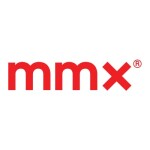In 2011, brand owners faced an unprecedented challenge. A new internet top-level domain (TLD) was launched which carried not only the usual risk of infringement, but for many organisations the added risk of reputational harm if a brand was merely perceived to be associated with the TLD. Unlike the generic TLD (gTLD) expansion including .biz, .info and .museum a decade prior, the 2011 launch of .xxx carried the stated purpose of appealing exclusively to adult-themed content. In the decade leading up to the .xxx launch, many brand owners had developed defensive registration strategies of securing top brand terms across the top five or six gTLDs (.com, .net, .org, .info, .biz, and sometimes .mobi), plus any country-code TLDs (ccTLDs) where the company does business.
However, when .xxx launched, brand owners saw dubious value in the prospect of defensively registering a large volume of adult-themed domain names, thereby potentially associating their brands with this content and incurring even more recurring renewal costs, while still not solving the challenge of where to point these domains. When ICM Registry (predecessor in interest to today’s MMX) announced its Sunrise B blocking service, brand owners flocked to protect not only the exact spellings of their brands, but numerous misspellings and variations as well. For a reasonable one-time fee, brand owners chose to eliminate the risk of perceived association with adult-themed content for a full decade by purchasing blocks that merely resolve to a “This domain has been reserved from registration” page.
What is happening now?
Brand owners who choose to act may do so now and have a couple different options at their disposal. To replace the retiring Sunrise B blocks, MMX has announced its new AdultBlock and AdultBlock+ blocking services. Beyond covering just .xxx, both AdultBlock products are effective across all four MMX adult TLDs: .xxx, .porn, .adult, and .sex. Helping to reduce the number of blocks necessary to protect a given brand, the AdultBlock+ version blocks third parties from registering not only the exact match of the mark, but also all possible “homoglyph” variations of the mark, for example: I & l & ĺ (uppercase i, lowercase letter L, and lowercase L with acute), which are common in phishing attacks.
What should trademark owners do?
Many companies’ online brand protection strategies have evolved since 2011, especially in light of the Internet Corporation for Assigned Names and Numbers’ 2012 new gTLD programme, resulting in the addition of more than 1,200 new gTLDs to the global domain name system. Correspondingly, some IP enforcement budgets have ballooned to continue protecting trademarks and customers in TLDs ranging from as niche as .adult to as generic as .xyz, while many others have not, requiring a new level of sophistication for in-house counsel to remain effective.
Trademark owners should review which .xxx Sunrise B blocks need to be converted to an AdultBlock or AdultBlock+, and whether any new marks need to be protected. This review provides an opportune time to review overall domain name strategy including the handful of other blocking services on the market. Each blocking service provides the opportunity to reduce defensive registrations and domain portfolio bloat, and each has its own features and benefits. For example, Donuts’ DPML block covers the most TLDs of any block with a Plus variation that covers typos, TMCH’s TREx covers some ccTLDs, and UNR’s Uni EPS also has a Plus variation that includes homoglyphs. As blocking services are evolving constantly, brand owners should review this landscape at least annually to determine whether any new blocks present a cost-effective way to reduce domain name portfolio bloat and maintain or improve brand protection levels.
Corporate domain name registrars like MarkMonitor can explain the costs, features, and benefits of the various blocking services available, with the goal of helping trademark owners minimise the cost of protecting their IP and customers. Please do not hesitate to contact us with any questions, or for help with this analysis.
Brian King is Director of Internet Policy and Industry Affairs at MarkMonitor in Washington DC.











